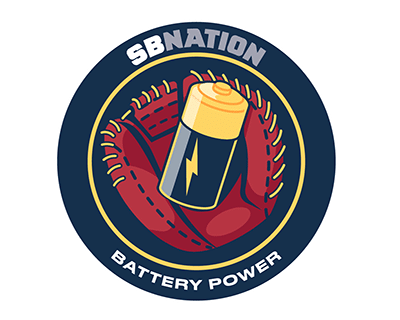/cdn.vox-cdn.com/uploads/chorus_image/image/66586618/usa_today_11069548.0.jpg)
Our stroll down Atlanta Braves memory lane continues with an arm from the early 1990s in Steve Avery. If you haven’t been following our prospect retrospect series, we’re taking a look back at some of the high draft picks, big trade pickups and other minor leaguers who may — or in most cases, may not — have reached our expectations. The list, so far, includes:
Today, we turn our attention to a young pitcher with so much promise who looked like he was on the road to stardom early on. That, however, changed quickly and the career of Steve Avery has become more of a what if than a what was.
Steve Avery, the best prospect in Minor League Baseball
The young southpaw was taking the baseball world by storm in Michigan. Pitching for John F. Kennedy High School in Taylor, less than 20 miles outside of Detroit. Standing at 6-4 and 180 as a teenager, Avery was hailing comparisons to Steve Carlton. Carlton, of course, was making the last appearances of an illustrious career that included four Cy Young awards and more than 4,000 strikeouts in 1988.
That same year, the Braves had the third pick in the MLB Draft. The Braves had an intriguing rotation at the big league level with an average age of 24.8 years old. The thought of Avery joining them quickly was too much to pass. The Braves scooped up Avery — the kid with the plus- plus fastball and two better than average secondaries — with their pick and at 18 years of age, he absolutely dominated the Appalachian League, going 7-1 in 10 starts with a 1.50 ERA, 0.86 WHIP and 80 strikeouts in 66 innings pitched in his professional debut.
By the age of 19, Avery was in Double-A Greenville and having little problem with hitters much older than himself. He did walk a bit much, and people wondered if he would be a big strikeout pitcher at the next level, but overall, everyone seemed enamored with him. He was the Braves’ top prospect in 1989, a feat he would repeat in 1990.
Except in 1990, the rest of the baseball world agreed with the Braves. Avery was the No. 1 prospect in all of baseball.
Avery and “The Young Guns” take Atlanta by storm
Avery made all of 13 Triple-A starts before joining the Atlanta Braves rotation in June of 1990. It wasn’t pretty by any means. He was rocked on the road in Cincinnati, lasting just 2.1 innings and allowing eight runs on eight hits with three walks. I suppose the positive is that none were home runs.
It wasn’t Avery’s performance in 1990 that left people excited. It was hardly worth getting excited about: he finished 3-11 with a 5.64 ERA, 1.68 WHIP and a mere 6.8 strikeouts-per-nine. No, what Atlanta was excited about was a rotation that hadn’t even reached the quarter-century mark yet. Tom Glavine (24), John Smoltz (23), Pete Smith (24) and Avery (20) were coined the ‘Young Guns” and gave the Braves — who hadn’t won 70 games since 1986 — hope.
And they were right.
Glavine won the 1991 Cy Young, Smoltz became a 14-game winner and Avery reeled off 18 victories as the Braves went from worst to first in a historic season to remember. Avery pitched four of the Braves biggest ball games that season. During two late-season showdowns with the Los Angeles Dodgers — who wound up finishing just one game behind the Braves — Avery pitched back-to-back complete games, allowing one earned run and one walk over those 18 innings.
The hot streak continued into the postseason, where Avery picked up the NLCS MVP honors in record-setting fashion. The 20-year-old hurled 16.1 innings of shutout baseball striking out 17 along the way.
Avery was solid over the next two seasons, repeating as an 18-game winner in 1993. But it was a September 1993 start in which Avery injured his armpit of all things that changed the course of his MLB history.
Steve Avery, the superstar that never was
Avery never rebounded from the injury, and his numbers quickly began on a downward slope. He had flashes mind you, a brilliant performance in the 1995 World Series comes to mind, but he simply was never the same.
Was it the workload? This was the era right before meticulously tracking pitch counts and inning limits came into play. Avery, as an 18-year-old tossed 66 innings in a half a season after being drafted the same year, something unheard of in today’s game. In his first three big-league seasons, he made 35 starts each year, eclipsing the 200 innings pitched mark every time. There were no Joba Rules or Stephen Strasburg handling in Avery’s day.
Avery bounced around the bigs with stops in Boston and Cincinnati before fading away out of baseball by age 29. An attempted comeback two years later ended after 19 games out of the bullpen with Detroit.
We know what happened with his fellow Young Guns. Smith, well, Pete Smith was never destined for superstardom traded by the team that drafted him — the Philadelphia Phillies — before he reached the bigs. But Glavine and Smoltz, well, they are Hall of Famers. Could Avery have joined them? What would the rotation been like if Avery remained healthy when Greg Maddux joined one year later, with Avery still young enough to be a college student of The Professor?
We’ll never know, leaving Avery as one of the Braves great “what ifs” of the 1990s.
